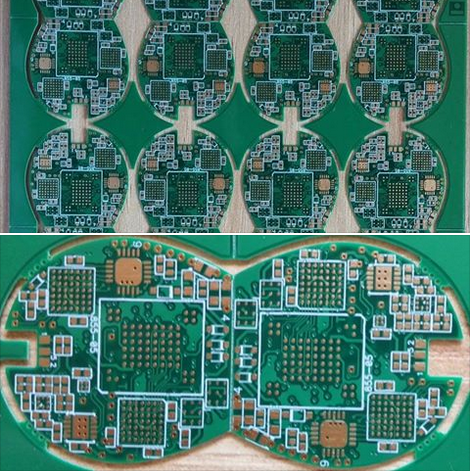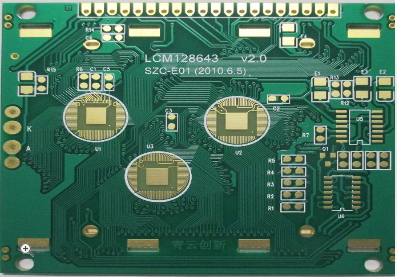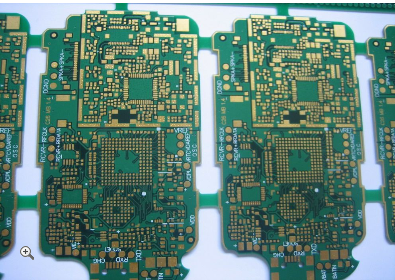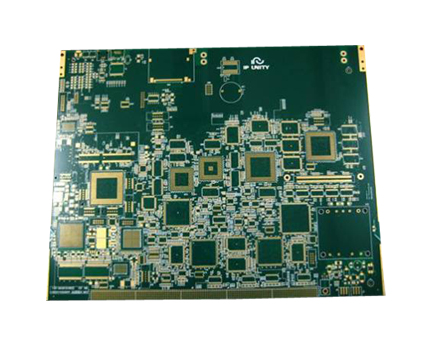-
 Agriculture
Agriculture
-
 Health-Care
Health-Care
-
 Environment
Environment
-
 Construction-Real-Estate
Construction-Real-Estate
-
 Tools-Hardware
Tools-Hardware
-
 Home-Garden
Home-Garden
-
 Furniture
Furniture
-
 Luggage-Bags-Cases
Luggage-Bags-Cases
-
 Medical-devices-Supplies
Medical-devices-Supplies
-
 Gifts-Crafts
Gifts-Crafts
-
 Sports-Entertainment
Sports-Entertainment
-
 Food-Beverage
Food-Beverage
-
 Vehicles-Transportation
Vehicles-Transportation
-
 Power-Transmission
Power-Transmission
-
 Material-Handling
Material-Handling
-
 Renewable-Energy
Renewable-Energy
-
 Safety
Safety
-
 Testing-Instrument-Equipment
Testing-Instrument-Equipment
-
 Construction-Building-Machinery
Construction-Building-Machinery
-
 Pet-Supplies
Pet-Supplies
-
 Personal-Care-Household-Cleaning
Personal-Care-Household-Cleaning
-
 Vehicle-Accessories-Electronics-Tools
Vehicle-Accessories-Electronics-Tools
-
 School-Office-Supplies
School-Office-Supplies
-
 Packaging-Printing
Packaging-Printing
-
 Mother-Kids-Toys
Mother-Kids-Toys
-
 Business-Services
Business-Services
-
 Commercial-Equipment-Machinery
Commercial-Equipment-Machinery
-
 Apparel-Accessories
Apparel-Accessories
-
 Security
Security
-
 Shoes-Accessories
Shoes-Accessories
-
 Vehicle-Parts-Accessories
Vehicle-Parts-Accessories
-
 Jewelry-Eyewear-Watches-Accessories
Jewelry-Eyewear-Watches-Accessories
-
 Lights-Lighting
Lights-Lighting
-
 Fabric-Textile-Raw-Material
Fabric-Textile-Raw-Material
-
 Fabrication-Services
Fabrication-Services
-
 Industrial-Machinery
Industrial-Machinery
-
 Consumer-Electronics
Consumer-Electronics
-
 Electrical-Equipment-Supplies
Electrical-Equipment-Supplies
-
 Electronic-Components-Accessories-Telecommunications
Electronic-Components-Accessories-Telecommunications
-
 Home-Appliances
Home-Appliances
-
 Beauty
Beauty
-
 Chemicals
Chemicals
-
 Rubber-Plastics
Rubber-Plastics
-
 Metals-Alloys
Metals-Alloys
- Masonry Materials
- Curtain Walls & Accessories
- Earthwork Products
- Fireproofing Materials
- Heat Insulation Materials
- Plastic Building Materials
- Building Boards
- Soundproofing Materials
- Timber
- Waterproofing Materials
- Balustrades & Handrails
- Bathroom & Kitchen
- Flooring & Accessories
- Tiles & Accessories
- Door, Window & Accessories
- Fireplaces & Stoves
- Floor Heating Systems & Parts
- Stairs & Stair Parts
- Ceilings
- Elevators & Escalators
- Stone
- Countertops, Vanity Tops & Table Tops
- Mosaics
- Metal Building Materials
- Multifunctional Materials
- Ladders & Scaffoldings
- Mouldings
- Corner Guards
- Decorative Films
- Formwork
- Building & Industrial Glass
- Other Construction & Real Estate
- Wallpapers/Wall panels
- HVAC System & Parts
- Outdoor Facilities
- Prefabricated Buildings
- Festive & Party Supplies
- Bathroom Products
- Household Sundries
- Rain Gear
- Garden Supplies
- Household Cleaning Tools & Accessories
- Lighters & Smoking Accessories
- Home Storage & Organization
- Household Scales
- Smart Home Improvement
- Home Textiles
- Kitchenware
- Drinkware & Accessories
- Dinnerware, Coffee & Wine
- Home Decor
- Golf
- Fitness & Body Building
- Amusement Park Facilities
- Billiards, Board Game,Coin Operated Games
- Musical Instruments
- Outdoor Affordable Luxury Sports
- Camping & Hiking
- Fishing
- Sports Safety&Rehabilitation
- Ball Sports Equipments
- Water Sports
- Winter Sports
- Luxury Travel Equipments
- Sports Shoes, Bags & Accessories
- Cycling
- Other Sports & Entertainment Products
- Artificial Grass&Sports Flooring&Sports Court Equipment
- Scooters
- Food Ingredients
- Honey & Honey Products
- Snacks
- Nuts & Kernels
- Seafood
- Plant & Animal Oil
- Beverages
- Fruit & Vegetable Products
- Frog & Escargot
- Bean Products
- Egg Products
- Dairy Products
- Seasonings & Condiments
- Canned Food
- Instant Food
- Baked Goods
- Other Food & Beverage
- Meat & Poultry
- Confectionery
- Grain Products
- Feminie Care
- Hair Care & Styling
- Body Care
- Hands & Feet Care
- Hygiene Products
- Men's Grooming
- Laundry Cleaning Supplies
- Travel Size & Gift Sets
- Room Deodorizers
- Other Personal Care Products
- Pest Control Products
- Special Household Cleaning
- Floor Cleaning
- Kitchen & Bathroom Cleaning
- Oral Care
- Bath Supplies
- Yellow Pages
- Correction Supplies
- Office Binding Supplies
- Office Cutting Supplies
- Board Erasers
- Office Adhesives & Tapes
- Education Supplies
- Pencil Cases & Bags
- Notebooks & Writing Pads
- File Folder Accessories
- Calendars
- Writing Accessories
- Commercial Office Supplies
- Pencil Sharpeners
- Pens
- Letter Pad/Paper
- Paper Envelopes
- Desk Organizers
- Pencils
- Markers & Highlighters
- Filing Products
- Art Supplies
- Easels
- Badge Holder & Accessories
- Office Paper
- Printer Supplies
- Book Covers
- Other Office & School Supplies
- Stationery Set
- Boards
- Clipboards
- Stamps
- Drafting Supplies
- Stencils
- Electronic Dictionary
- Books
- Map
- Magazines
- Calculators
- Baby & Toddler Toys
- Educational Toys
- Classic Toys
- Dress Up & Pretend Play
- Toy Vehicle
- Stuffed Animals & Plush Toys
- Outdoor Toys & Structures
- Balloons & Accessories
- Baby Food
- Children's Clothing
- Baby Supplies & Products
- Maternity Clothes
- Kids Shoes
- Baby Care
- Novelty & Gag Toys
- Dolls & Accessories
- Puzzle & Games
- Blocks & Model Building Toys
- Toddler Clothing
- Baby Clothing
- Kids' Luggage & Bags
- Arts, Crafts & DIY Toys
- Action & Toy Figures
- Baby Appliances
- Hobbies & Models
- Remote Control Toys
- Promotional Toys
- Pregnancy & Maternity
- Hygiene Products
- Kid's Textile&Bedding
- Novelty & Special Use
- Toy Weapons
- Baby Gifts
- Baby Storage & Organization
- Auto Drive Systems
- ATV/UTV Parts & Accessories
- Marine Parts & Accessories
- Other Auto Parts
- Trailer Parts & Accessories
- Auto Transmission Systems
- Train Parts & Accessories
- Universal Parts
- Railway Parts & Accessories
- Auto Brake Systems
- Aviation Parts & Accessories
- Truck Parts & Accessories
- Auto Suspension Systems
- Auto Lighting Systems
- New Energy Vehicle Parts & Accessories
- Auto Steering Systems
- Wheels, Tires & Accessories
- Bus Parts & Accessories
- Auto Performance Parts
- Cooling System
- Go-Kart & Kart Racer Parts & Accessories
- Air Conditioning Systems
- Heavy Duty Vehicle Parts & Accessories
- Auto Electrical Systems
- Auto Body Systems
- Auto Engine Systems
- Container Parts & Accessories
- Motorcycle Parts & Accessories
- Refrigeration & Heat Exchange Equipment
- Machine Tool Equipment
- Food & Beverage Machinery
- Agricultural Machinery & Equipment
- Apparel & Textile Machinery
- Chemical Machinery
- Packaging Machines
- Paper Production Machinery
- Plastic & Rubber Processing Machinery
- Industrial Robots
- Electronic Products Machinery
- Metal & Metallurgy Machinery
- Woodworking Machinery
- Home Product Manufacturing Machinery
- Machinery Accessories
- Environmental Machinery
- Machinery Service
- Electrical Equipment Manufacturing Machinery
- Industrial Compressors & Parts
- Tobacco & Cigarette Machinery
- Production Line
- Used Industrial Machinery
- Electronics Production Machinery
- Other Machinery & Industrial Equipment
- Camera, Photo & Accessories
- Portable Audio, Video & Accessories
- Television, Home Audio, Video & Accessories
- Video Games & Accessories
- Mobile Phone & Accessories
- Electronic Publications
- Earphone & Headphone & Accessories
- Speakers & Accessories
- Smart Electronics
- TV Receivers & Accessories
- Mobile Phone & Computer Repair Parts
- Chargers, Batteries & Power Supplies
- Used Electronics
- VR, AR, MR Hardware & Software
- Projectors & Presentation Equipments
- Other Consumer Electronics
- Cables & Commonly Used Accessories
- Computer Hardware & Software
- Displays, Signage and Optoelectronics
- Discrete Semiconductors
- Wireless & IoT Module and Products
- Telecommunications
- Connectors, Terminals & Accessories
- Development Boards, Electronic Modules and Kits
- Circuit Protection
- Sensors
- Isolators
- Audio Components and Products
- Integrated Circuits
- Power Supplies
- Relays
- RF, Microwave and RFID
- Electronic Accessories & Supplies
- Passive Components
- PCB & PCBA
- Air Quality Appliances
- Home Appliance Parts
- Heating & Cooling Appliances
- Small Kitchen Appliances
- Laundry Appliances
- Water Heaters
- Water Treatment Appliances
- Refrigerators & Freezers
- Personal Care & Beauty Appliances
- Major Kitchen Appliances
- Cleaning Appliances
- Second-hand Appliances
- Smart Home Appliances
- Other Home Appliances
- Energy Chemicals
- Inorganic Chemicals
- Basic Organic Chemicals
- Agrochemicals
- Admixture & Additives
- Catalysts & Chemical Auxiliary Agents
- Pigments & Dyestuff
- Coating & Paint
- Daily Chemicals
- Polymer
- Organic Intermediate
- Adhesives & Sealants
- Chemical Waste
- Biological Chemical Products
- Surface Treatment Chemicals
- Painting & Coating
- Chemical Reagents
- Flavor & Fragrance
- Non-Explosive Demolition Agents
- Other Chemicals
- Custom Chemical Services
High Frequency PCB Materials and Design for Weather Monitoring Radar Systems
Weather monitoring radar systems are critical tools for modern meteorology, providing essential data for forecasting severe weather events, tracking precipitation, and ensuring public safety. The accuracy and reliability of these systems are heavily dependent on the performance of their underlying electronic components, particularly the printed circuit boards (PCBs) that form the core of the radar's transmitter and receiver modules. As radar technology advances towards higher frequencies, such as the Ka-band and W-band, to achieve finer resolution and more detailed atmospheric profiling, the demands on the PCB materials and their design become exponentially greater. This article delves into the specialized world of high-frequency PCB materials and design principles tailored specifically for the challenging environment of weather monitoring radar systems. Understanding these elements is paramount for engineers aiming to develop radar systems that are not only powerful and precise but also durable and reliable in the face of nature's extremes.
The Critical Role of Dielectric Properties in Radar Performance
The choice of substrate material for a high-frequency PCB is arguably the most fundamental decision in the design of a weather radar system. Unlike standard FR-4 materials used in consumer electronics, high-frequency radars require substrates with exceptionally stable and low dielectric constants (Dk). A low Dk is crucial because it minimizes signal propagation delays, allowing for faster signal transmission, which is essential for the timing accuracy of radar pulses. More importantly, a stable Dk that remains consistent across a wide temperature range and different humidity levels is non-negotiable. Weather radar systems operate outdoors, subject to significant temperature fluctuations from day to night and across seasons. A material whose Dk varies with temperature would cause the electrical length of transmission lines to change, leading to phase errors and a degradation in radar image quality.
Furthermore, the dissipation factor (Df), which represents signal loss within the dielectric material, must be as low as possible. At high frequencies, even a slightly high Df can result in substantial attenuation of the radar signal, reducing the system's effective range and sensitivity. This is particularly critical for weather radars, which need to detect weak signals reflected from distant rain droplets or ice crystals. Materials like PTFE (Teflon), ceramic-filled PTFE composites, and hydrocarbon-based laminates are commonly employed due to their excellent combination of low Dk and ultra-low Df. These materials ensure that the maximum amount of energy is transmitted towards the atmosphere and that the faint return signals are preserved with minimal degradation through the receiver chain.
Advanced Design Techniques for Signal Integrity
Once the appropriate material is selected, the physical design of the PCB traces and layers becomes the next critical factor. At microwave and millimeter-wave frequencies, PCB traces are not simple conductors; they act as transmission lines. Controlled impedance is paramount, meaning the characteristic impedance of every trace (typically 50 ohms) must be precisely maintained from the transmitter output to the antenna and from the antenna back to the receiver input. Any impedance discontinuity, such as a sharp bend, a via transition, or an imperfect connector, will cause signal reflections. These reflections distort the transmitted pulse and create noise in the received signal, compromising the radar's ability to accurately determine the location and intensity of weather phenomena.
To manage this, designers employ sophisticated techniques like grounded coplanar waveguides (GCPW) and microstrip lines, carefully modeled using electromagnetic (EM) simulation software. These tools allow engineers to predict and optimize the behavior of signals before a board is ever fabricated. Another crucial design aspect is the management of interlayer transitions. Vias, which are plated-through holes connecting different layers, can introduce parasitic capacitance and inductance. For high-frequency designs, back-drilling (removing the unused portion of the via barrel) or using specialized low-inductance via structures is often necessary to minimize these parasitic effects. A robust grounding strategy, with multiple via fences around critical RF lines, is also essential to prevent signal leakage and crosstalk between different sections of the circuit, ensuring a clean and isolated signal path.
Thermal Management and Environmental Durability
Weather monitoring radar systems are deployed in harsh, uncontrolled environments and must operate 24/7. The transmitter section, particularly the power amplifiers, generates significant heat. If this heat is not effectively dissipated, it can lead to elevated operating temperatures, which can degrade the performance of active components and, more critically, cause the PCB substrate itself to expand and its dielectric properties to drift. Therefore, thermal management is not just about component reliability; it is directly tied to RF performance stability. High-frequency laminates often have specialized thermal properties, but the PCB design must facilitate heat flow. This involves using metal-core boards, incorporating thermal vias directly under heat-generating components to conduct heat to internal ground planes or external heatsinks, and ensuring adequate airflow around the assembly.
Beyond thermal challenges, the PCB must withstand environmental stressors like moisture, humidity, and potential contamination. Moisture absorption is a significant concern for many PCB materials, as water has a high dielectric constant. If a substrate absorbs moisture, its effective Dk will increase, detuning the carefully designed RF circuits. Therefore, materials with very low moisture absorption rates are preferred. Additionally, the final PCB assembly must be protected with conformal coatings that are transparent to RF signals. These coatings seal the circuitry from humidity, dust, and chemical contaminants, ensuring long-term reliability without impairing the high-frequency electrical performance. The selection of surface finishes, such as immersion silver or ENIG (Electroless Nickel Immersion Gold), also plays a role in preventing oxidation and ensuring reliable solder joints over the product's lifespan.
Integration with Antenna Elements and System Calibration
In modern phased-array weather radars, the antenna is no longer a separate dish but is often integrated directly onto the PCB in the form of a patch antenna array. This integration places additional demands on the PCB material and design. The substrate must provide the necessary mechanical support for the antenna elements while maintaining precise electrical characteristics across the entire array. Any inconsistency in the substrate's thickness or dielectric constant can lead to phase errors between individual antenna elements, distorting the radar beam and reducing the system's angular resolution. The layout of the feed network that distributes the signal to each patch antenna must be perfectly symmetrical and impedance-matched to ensure uniform excitation.
Finally, the design must account for calibration and testability. Weather radars require periodic calibration to maintain accuracy. This means the PCB design should include built-in test points and structures that allow engineers to measure and adjust the system's performance in the field. These features must be designed to have minimal impact on the primary RF paths when not in use. The entire design process, from material selection to final layout, is a complex balancing act aimed at achieving a single goal: creating a stable, efficient, and robust platform that enables the radar system to deliver the highly reliable data that meteorologists and the public depend on for safety and planning.
REPORT































































































































































































































































































































































































































































































































































































